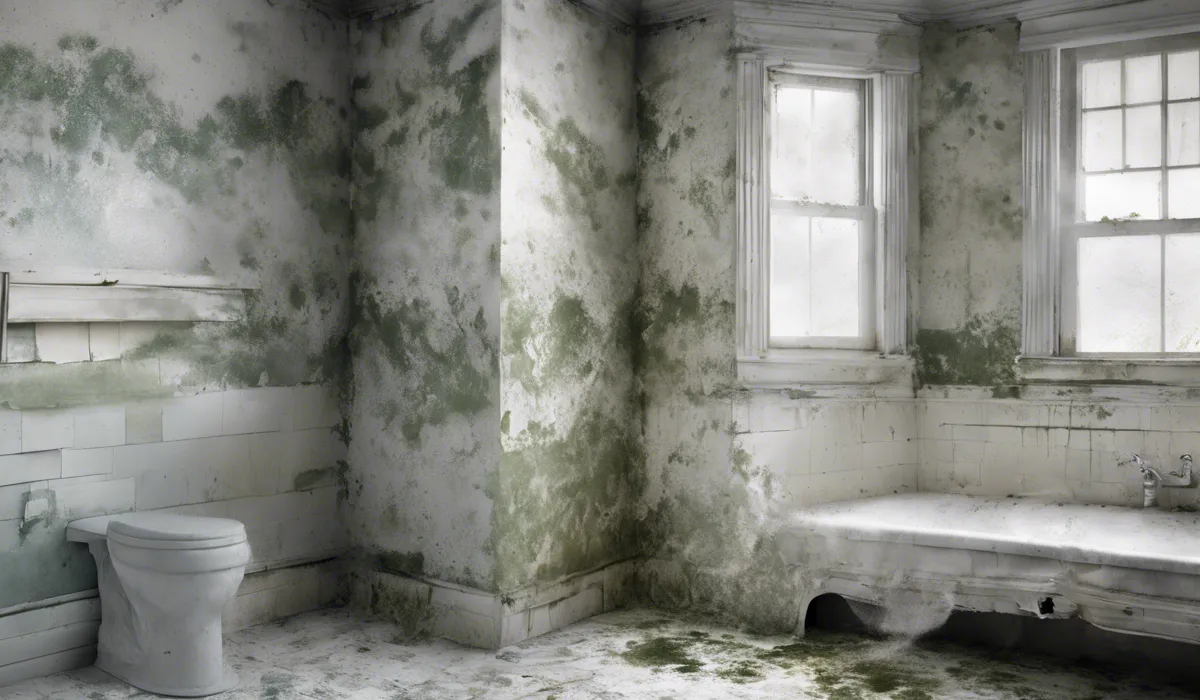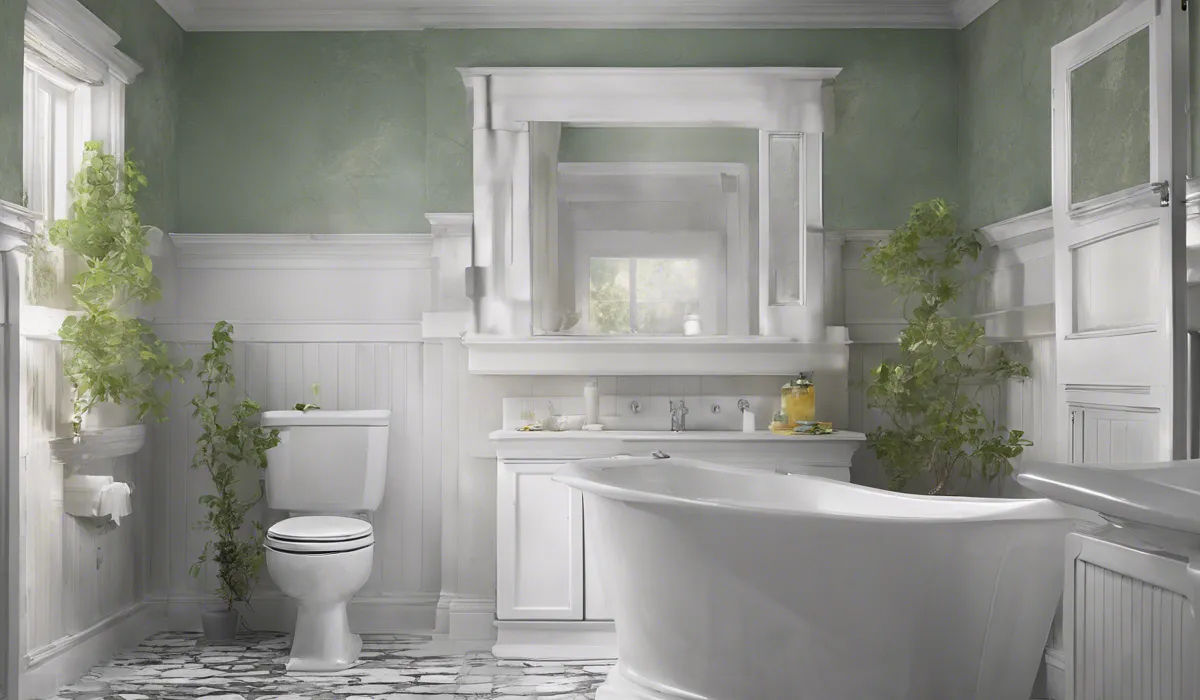To clean up mold, first wear protective gear. Scrub moldy surfaces with a mixture of 1 part bleach to 10 parts water. Rinse with clean water and dry thoroughly. Discard any porous materials that are mold-infested.
Understanding Mold

What is Mold?
Mold is a type of fungus that can grow almost anywhere there is moisture and organic material.
It appears in various colors, like black, white, green, or yellow, and often has a musty smell.
Mold reproduces by releasing tiny spores that travel through the air, which can start new mold growths when they land on suitable surfaces.
Health Risks of Mold Exposure
Being around mold can be harmful to your health. Some people might get allergies, have trouble breathing, feel their throat irritated, or get skin rashes.
For those with asthma or weak immune systems, the risks are even greater, as mold can trigger asthma attacks or lead to serious infections.
Where Does Mold Grow?
Mold loves damp, warm places. You can often find it in bathrooms, kitchens, basements, or any area that has had water damage.
It grows on many materials such as wood, paper, carpet, and foods. If you see or smell mold in your home, it means you have a moisture problem that needs attention.
Causes of Mold Growth
Mold grows when there is too much moisture in the air or on surfaces. Leaks, flooding, or high humidity can all lead to mold growth.
Warm temperatures between 60 and 80 degrees Fahrenheit also help mold thrive. Controlling moisture and temperature is key to preventing mold.
Mold Cleaning Techniques

Safety First
Before you start cleaning mold, protect yourself by wearing gloves, a mask, and goggles. This keeps you safe from touching or breathing in mold spores.
Make sure the area you are cleaning is well-ventilated to get fresh air in and moldy air out.
Choosing Cleaning Solutions
There are natural and chemical ways to clean mold. Natural cleaners like vinegar or baking soda are safer for people and pets, but sometimes you need stronger chemicals like bleach to get rid of mold.
Always read and follow the instructions carefully when using any cleaner.
Cleaning Mold Step by Step
To clean mold, start by scrubbing the moldy surface with soapy water. Then, use a mixture of 1 part bleach to 10 parts water to kill the mold.
Rinse the area with clean water and dry it completely. Throw away any sponges or cloths you used for cleaning, as they can still have mold spores on them.
Prevent Spreading Mold Spores
As you clean, be careful not to let mold spores spread to other places. Turn off fans and heating or cooling systems that might blow spores around.
After cleaning, vacuum the space with a HEPA filter vacuum to catch any loose spores.
Preventing Future Mold Growth

Controlling Home Humidity
Keep the humidity in your home below 50% to stop mold from growing. You can use a dehumidifier or an air conditioner to help with this.
Also, fix any leaks right away and dry any wet areas within 24 to 48 hours to prevent mold from getting a chance to grow.
Importance of Ventilation
Ventilation is very important in places like bathrooms and kitchens where moisture is common.
Use exhaust fans or open windows to let out steam from showers and cooking. This helps keep the air dry and mold-free.
Clean and Maintenance Tips
Regularly cleaning your home can keep mold away. Pay special attention to bathrooms and kitchens.
If you had mold before, check those areas often to make sure it doesn’t come back. If you have carpets, keep them clean and dry because they can hold moisture and help mold grow.
When to Call the Pros?
If you have a lot of mold, or if it keeps coming back, it might be time to get help from a professional.
They know how to safely remove mold and can also fix the problems that let the mold grow in the first place.
Remember, taking care of mold quickly can keep your home healthy and safe.
FAQs About Mold Cleanup
What protective gear should I wear when cleaning mold?
Before cleaning mold, it’s essential to wear protective gear such as gloves, a mask, and goggles to prevent inhalation and skin contact with mold spores.
What is the recommended bleach solution to clean mold?
To clean mold, use a mixture of 1 part bleach to 10 parts water for an effective cleaning solution.
How should I rinse surfaces after scrubbing mold?
After scrubbing moldy surfaces, rinse them with clean water to remove any remaining bleach solution and loose mold spores.
What is the best way to dry surfaces after mold cleanup?
Once you have rinsed the surfaces, dry them thoroughly with a towel or allow them to air dry, ensuring no moisture remains which could promote new mold growth.
What should I do with porous materials that have mold infestations?
Discard any porous materials, like carpet or ceiling tiles, that are heavily infested with mold, as it can be difficult to completely remove mold from these items.
Final Thoughts
When tackling mold, safety is paramount; don protective gear before beginning. Use a diluted bleach solution (1:10 ratio with water) for scrubbing mold off surfaces.
After thorough cleaning, ensure all areas are rinsed and dried completely. Be prepared to dispose of any porous items that have been compromised by mold to prevent further contamination.
